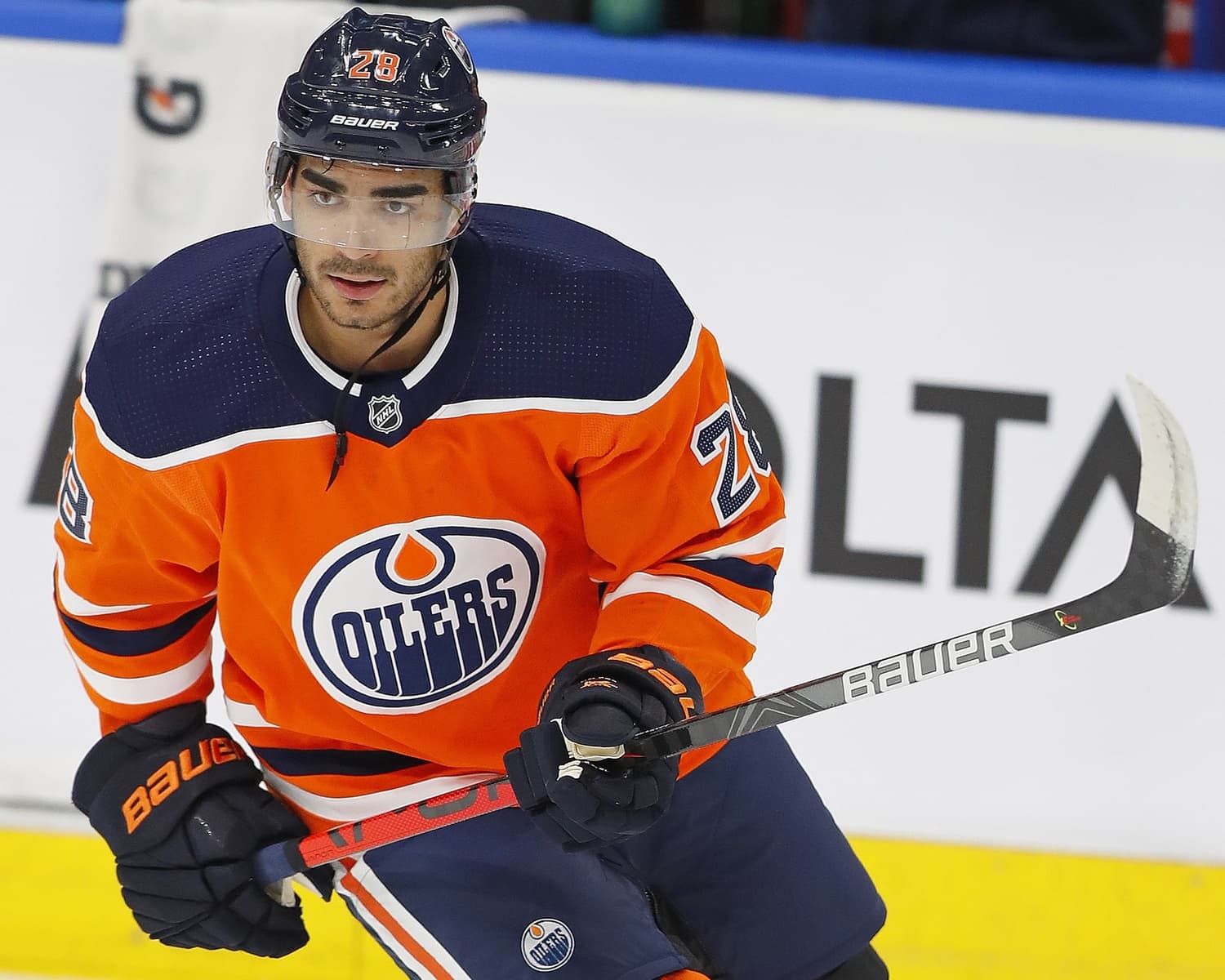When Ken Holland acquired Andreas Athanasiou at the trade deadline, he had both the short- and long-term in mind.
Holland ponied up two second-round picks to acquire Athanasiou, who, despite a rough season on a terrible Red Wings squad, was only one year removed from a 30-goal season. The Oilers were pushing for a playoff spot and acquiring help on the wing that wasn’t a rental seemed like an ideal play.
But things have changed since then.
Due to COVID-19 and the league’s subsequent revenue shortfall, the salary cap won’t be going up for the 2020-21 season. As a result of Edmonton’s unanticipated cap crunch, they might not be able to afford to let the Athanasiou experiment continue.
Athanasiou is a player that Holland knows very well. When he was the general manager of the Red Wings, Holland drafted Athanasiou with the No. 110 pick in the 2012 draft. After a few years of seasoning, Athanasiou broke into the league with an 18-goal season in 2016-17.
A big, fast, skilled winger with the ability to put the puck in the back of the net, Athanasiou’s best season came in 2018-19 on a rebuilding Wings team. He scored 30 goals and 54 points over 76 games playing mostly with checking forwards Frans Nielsen and Luke Glendening. He failed to build on that season in 2019-20, scoring just 10 goals and 24 points in 54 games before getting dealt to Edmonton.
We didn’t get to see much of Athanasiou with the Oilers as he played just nine games before the season got paused.
In 30 even-strength minutes with Connor McDavid and Tyler Ennis, the trio outscored opponents 2-to-1. In 45 even-strength minutes with a combination of Riley Sheahan, Zack Kassian, and Josh Archibald, the group got outscored 2-to-0. In the playoffs, Athanasiou played 16 minutes with Leon Draisaitl and Kailer Yamamoto and the trio got outscored 2-to-0. His play on the third line with Sheahan and Kassian was better, as the trio didn’t score or allow a goal but outshot their opponents 11-to-6.
The sample sizes here are tiny, so there really isn’t all that much that we can conclude. He’s showed some nice flashes during his few games in Edmonton, but, ultimately, when we wonder what Athanasiou can do for the Oilers, we look at his work as a Red Wing and hope we can see some more of this…
Had everything gone normally and the salary cap went up as expected, it would have obviously been a no-brainer to bring Athanasiou back in 2020-21. But now with the crunch Holland is facing, shelling out cash for a player coming off of an 11-goal season with a Green Jacket-calibre minus-46 rating isn’t automatic.
Athanasiou, who’s a restricted free agent this fall, is under team control for one more year before he’s eligible to hit the open market as an unrestricted free agent. He also has arbitration rights, making this whole process a little more challenging.
If the Oilers qualify Athanasiou, he can opt to go to arbitration to seek a higher salary. If it gets to that, Athanasiou would be going into arbitration looking for a raise on his $3,000,000 salary. If the number awarded to him is lower than the NHL’s ‘walk-away’ number(which PuckPedia has pegged at $4,538,958), the Oilers will be stuck with the contract.
Going to arbitration is never an ideal situation. It’s a process that ultimately results in teams going up against their own players with evidence that suggests they aren’t as good as they think they are. Just ask Tommy Salo how his experience was.
Holland will surely avoid this situation as an unfavourable arbitration award to Athanasiou could make his already-tight cap situation even more difficult.
Ideally, Holland and Athanasiou come to terms on a multi-year deal that gives Athanasiou some security but carries a smaller cap hit for the Oilers. Something like two years at $2.75 million annually.
But given the leverage that Athanasiou has in this situation, there’s no guarantee that a team-friendly deal will be made. From Athanasiou’s agent’s perspective, he can express a desire to go to arbitration, which, knowing Holland’s tight cap situation, could result in the general manager opting to not qualify the player, which would give Athanasiou unrestricted free agency.
Holland has already duked it out with Athanasiou’s agent once before. Back in 2017, after his 18-goal season, Athanasiou sat out for the first few weeks of the season seeking a raise after his entry-level deal expired. The two sides didn’t come to a deal until Oct. 23, settling on a one-year, $1,387,500 contract.
One thing going for Edmonton in this situation is that this might not be the ideal time for Athanasiou to become a UFA. Money is tight everywhere and he’s coming off a pretty ugly season. There’s no guarantee he’ll find a bigger contract in free agency than the one he’ll find here.
All in all, this is a tricky situation. Holland had a good thought process in acquiring a player who could help for more than one season, but an unforeseen circumstance has resulted in the deal potentially backfiring. While Holland doesn’t want to throw away two second-round picks for a few games of Athanasiou, he also doesn’t want to shaft his team with a bad contract.
I would love to see the Athanasiou experiment continue. I believe he’d be a nice fit as a player who can drive offence on the team’s third line, much like he did when he had his 30-goal season in Detroit playing with Nielsen and Glendening.
His 2019-20 season didn’t go well and this situation with the Oilers could be a positive one for him to finally play on a contending team. But, given the cap situation, making a trade in order to recoup some draft assets for Athanasiou might be the move.

